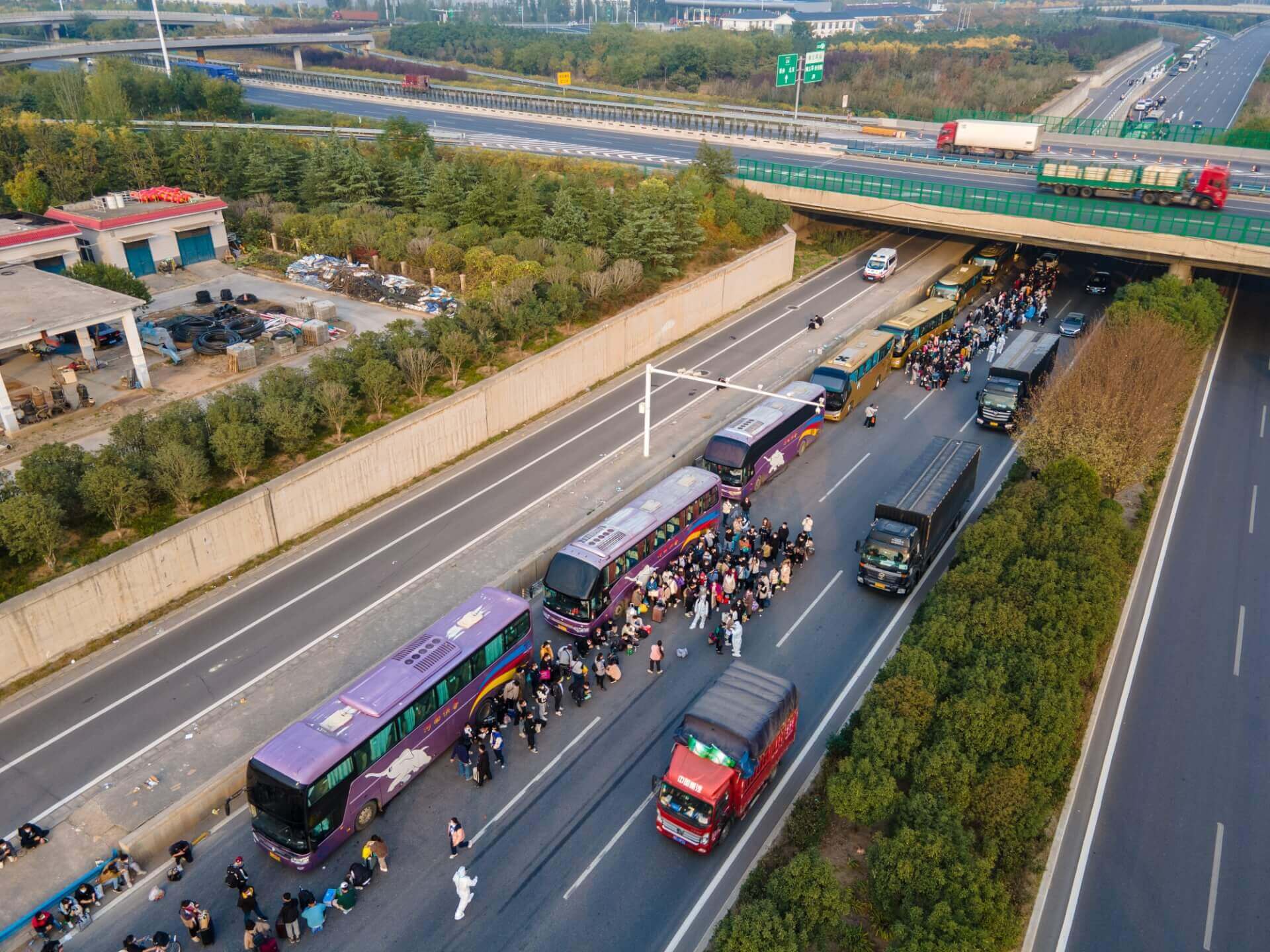Workers in Zhengzhou in China’s Henan province staged a mass breakout and fled the world’s largest assembly line for iPhones over the weekend after a lockdown was imposed in the area.
The factory, which is owned by Taiwanese giant Foxconn, is one of Apple’s largest suppliers. After a COVID outbreak at the Foxconn campus in the city, local authorities on Wednesday imposed a seven-day lockdown of the area, triggering panic among workers that in turn resulted in the exodus.
Partial restrictions were first imposed in the area in mid-October after the emergence of a few cases. By Saturday, social media became flooded with videos of workers leaving on foot in large numbers having abandoned their jobs. Videos also showed workers walking through fields.
Some of the escaping Foxconn workers have now made it back to their home towns after being given lifts part of the way by passing cars. #China #Covid pic.twitter.com/lSZ18afqAI
— Stephen McDonell (@StephenMcDonell) October 31, 2022
Several of the company’s 200,000 employees are migrant workers who came to the city to seek work. As they head back to their hometowns, local municipalities are scrambling to prevent them from spreading new cases on their journey.
The exodus was partially triggered by rumours circulating within the company, as well as the country’s intolerant and repressive zero-COVID policy. Immediate bosses at Foxconn had been claiming that there were no infections in the factory, even though the company had been telling the media that there were no “symptomatic” infections. Even among staff, there were several publicly known examples of staff who had tested positive.
So they may think Zero #Covid is going great but here are more of the Foxconn workers who’ve broken out of Apple’s largest assembly site in #Zhengzhou to escape a Zero #Covid lockdown and walk to hometowns some more than 100 kilometres away to beat #China’s phone app restrictions pic.twitter.com/wTzCR2lest
— Stephen McDonell (@StephenMcDonell) October 30, 2022
Hundreds of thousands of staff members had been instructed to stay in the factory complex, with some of them being confined to only the worker dormitories and other parts of the factory.
A 21-year-old employee told the BBC that he had heard rumours that the army was going to come in and enforce a large-scale “living with COVID” experiment, which involved allowing everyone in that part of the city to become infected. According to the rumour, the plan was to see how many deaths would occur, which would help guide authorities on if and how to open up the rest of the country.
Workers have broken out of #Apple’s largest assembly site, escaping the Zero #Covid lockdown at Foxconn in #Zhengzhou. After sneaking out, they’re walking to home towns more than 100 kilometres away to beat the Covid app measures designed to control people and stop this. #China pic.twitter.com/fShxj8WpIl
— Stephen McDonell (@StephenMcDonell) October 30, 2022
Another worker told the news agency that she didn’t “think it would be that bad at first,” adding, “But then people around me started getting infected. Positive cases in other dorms were not being taken away to quarantine for several days. Those I know who kept working, all started confirming as positive.”
“The anti-virus measures on campus are shambolic, virus-negative people are living together with virus-positive people,” another worker told AFP.
According to a post on the Zhengzhou government’s official WeChat account, the company had tried to quell distrust by telling workers that it understood their “eagerness to go back home.” It emphasised: “For employees who voluntarily stay in the company’s factory area, the port government and the company will jointly ensure everyone’s…health and safety.”
Real China(40):Workers leave #Foxconn factory in Zhengzhou amid COVID curbs.郑州工人都润了,再不润就要被清零了 pic.twitter.com/mscn2rIr8a
— China Forbidden中国禁闻 (@yeyouwei3) October 31, 2022
Despite the company’s reassurances, rumours fuelled panic and scores of labourers jumped the campus’ fence to begin their journey on foot. As most part of Zhengzhou is currently under some form of lockdown, phone app health codes bar people from leaving, at least officially. Additionally, they are barred from boarding public transport, including taxis.
According to Ivan Lam, a senior research analyst at Counterpoint, the world’s biggest iPhone factory typically contributes as much as 85% of iPhone assembly capacity. The plant’s shortage of labour could set iPhone production back by several months, leading to a 10-30% drop in output by next month.
“At present, because now is the peak production season… [there is] a large demand for workers,” a Foxconn spokesperson told Henan Daily on Monday. The official added that the company is “also coordinating back-up production capacity at other sites” and predicted that things will get “back to normal” within two weeks.

